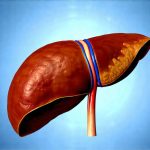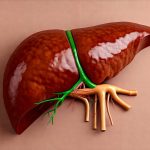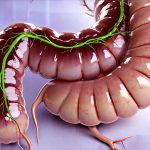The body’s natural detoxification processes are often viewed as something solely handled by organs like the liver and kidneys, but this perspective overlooks a crucial partner: the gut microbiome. This complex ecosystem of trillions of microorganisms residing in our digestive tract profoundly impacts how efficiently we eliminate toxins and maintain overall well-being. It’s not simply about removing waste; it’s about transforming harmful substances into less dangerous forms, supporting bile flow for efficient fat digestion and toxin elimination, and bolstering the body’s natural defenses against environmental stressors. Recognizing this interconnectedness is fundamental to a holistic approach to health.
Traditionally, detoxification was often associated with restrictive diets or extreme cleansing regimens. However, understanding the microbiome shifts that focus toward supportive strategies—nourishing the gut ecosystem to enhance its inherent detoxifying capabilities—is far more sustainable and effective. A healthy microbiome isn’t just about avoiding toxins; it’s about actively facilitating their breakdown and elimination, while simultaneously reducing the burden on our primary detoxification organs. This nuanced approach acknowledges the body’s innate wisdom and works with natural processes rather than against them.
The Gut Microbiome & Detoxification Pathways
The gut microbiome plays a surprisingly central role in numerous detoxification pathways. It’s not just about processing what we ingest; it’s also about metabolizing compounds our bodies produce internally as byproducts of metabolism, and even those derived from environmental exposures. Microbes directly influence the efficacy of Phase I and Phase II liver detoxification processes—critical steps in converting toxins into water-soluble forms for excretion. Specifically, certain gut bacteria can:
- Deconjugate bile acids (more on this later), impacting hormone balance and toxin removal.
- Modulate inflammation, which is a major driver of oxidative stress and cellular damage. Chronic inflammation hinders detoxification processes.
- Produce enzymes that directly neutralize toxins or convert them into less harmful substances. For example, some bacteria can degrade pesticides or heavy metals.
Furthermore, the microbiome’s influence extends to the kidneys, another key organ in detoxification. Dysbiosis—an imbalance in gut microbial composition—can lead to increased intestinal permeability (often called “leaky gut”), allowing toxins to be reabsorbed into the bloodstream before they can be eliminated by the kidneys. This creates a vicious cycle where the body is constantly battling an internal toxic load. A balanced microbiome strengthens the gut barrier, minimizing this recirculation and optimizing kidney function. Understanding The Role Of Gut Inflammation In Nausea And Poor Nutrient Uptake can provide further insight here.
The relationship isn’t one-way either. The liver, recognizing microbial metabolites produced in the gut, adjusts its detoxification processes accordingly. Short-chain fatty acids (SCFAs), for instance—produced by bacterial fermentation of dietary fiber—are powerful signaling molecules that influence liver health and detoxification capacity. These SCFAs not only nourish colon cells but also travel to the liver, promoting antioxidant defenses and supporting efficient bile acid metabolism. This demonstrates a beautiful symbiotic relationship where gut bacteria actively contribute to hepatic function. Understanding the Liver’s Role in Detox and Hormone Balance further illuminates this connection.
Bile Flow & Microbial Modulation
Bile, produced by the liver and stored in the gallbladder, is essential for digesting fats and absorbing fat-soluble vitamins. However, its role extends far beyond digestion – it’s also a primary route of eliminating toxins from the body. Bile acts as a vehicle to carry waste products, including metabolized hormones, cholesterol, and environmental toxins, out of the liver and into the intestines for excretion. Efficient bile flow is therefore paramount for effective detoxification.
The gut microbiome significantly impacts bile acid metabolism. When bile acids are secreted by the liver, they’re initially in a conjugated form. Certain bacteria in the colon deconjugate these bile acids—essentially stripping them of their conjugation. This process has several consequences: it alters the reabsorption rate of bile acids (affecting cholesterol levels), influences gut motility, and impacts the overall detoxification pathway. Dysbiosis can disrupt this delicate balance, leading to reduced bile flow and a buildup of toxins in the liver.
Moreover, microbial dysregulation can contribute to cholestasis – a condition where bile flow is impaired. This impairment not only hinders toxin elimination but also creates a cascade of negative effects on liver health. Conversely, fostering a diverse microbiome promotes healthy bile acid metabolism, improving bile flow and enhancing detoxification capacity. Dietary interventions like increasing fiber intake—which feeds beneficial bacteria that modulate bile acids—and incorporating probiotic-rich foods can play a crucial role in optimizing this process. The Role of Bile Production in Digestive Gas Regulation is also relevant to understanding these processes.
Supporting Microbial Diversity for Enhanced Detoxification
A cornerstone of supporting the microbiome’s detoxifying capabilities is fostering diversity within the gut ecosystem. Monocultures – where only a few bacterial species dominate – are less resilient and less capable of performing complex detoxification tasks. Here’s how to cultivate microbial richness:
- Dietary Fiber: This is the primary food source for beneficial bacteria. Aim for 25-35 grams per day from sources like fruits, vegetables, whole grains, and legumes. Different types of fiber feed different bacterial species, so variety is key.
- Polyphenol-Rich Foods: Found in berries, dark chocolate (in moderation!), green tea, and colorful produce, polyphenols act as prebiotics—nourishing compounds that promote the growth of beneficial bacteria.
- Fermented Foods: Yogurt, kefir, sauerkraut, kimchi, and kombucha introduce live microorganisms to the gut, potentially increasing microbial diversity. Choose unpasteurized versions whenever possible to maximize probiotic benefits.
Beyond diet, other lifestyle factors influence microbial composition. Stress management is crucial, as chronic stress can negatively impact gut health. Regular exercise promotes a diverse microbiome, while excessive antibiotic use should be avoided unless absolutely necessary (and always under medical supervision). Prioritizing sleep is also essential, as sleep deprivation disrupts the gut-brain axis and can alter microbial balance. The Role Of The Gut-Brain Axis In Chronic Nausea, Bloating, And Emotional Digestion highlights this critical connection.
The Role of Short-Chain Fatty Acids (SCFAs)
As mentioned earlier, SCFAs—acetate, propionate, and butyrate—are metabolic byproducts produced when gut bacteria ferment dietary fiber. They are far more than just waste products; they’re powerful signaling molecules that exert profound effects on the entire body, including detoxification processes. Butyrate, in particular, is a primary energy source for colon cells, strengthening the gut barrier and reducing intestinal permeability.
SCFAs also influence liver health by:
- Reducing inflammation: SCFAs have anti-inflammatory properties, mitigating oxidative stress and protecting liver cells from damage.
- Enhancing glutathione production: Glutathione is a master antioxidant that plays a vital role in detoxification. SCFAs can boost its synthesis.
- Modulating bile acid metabolism: As previously discussed, SCFAs influence the deconjugation and reabsorption of bile acids, impacting toxin elimination.
Increasing SCFA production involves prioritizing fiber intake and fostering a diverse microbiome capable of fermenting that fiber efficiently. Specific foods like oats, barley, apples, and bananas are particularly good sources of prebiotic fibers that promote SCFA production.
Addressing Gut Permeability & Inflammation
Gut permeability – or “leaky gut” – is a significant obstacle to effective detoxification. When the intestinal barrier is compromised, toxins can leak into the bloodstream, triggering inflammation and overwhelming the body’s detoxification systems. Addressing this requires a multi-faceted approach:
- Repairing the Gut Lining: Nutrients like L-glutamine (an amino acid), zinc, and collagen can help rebuild and strengthen the gut barrier.
- Reducing Inflammation: An anti-inflammatory diet rich in omega-3 fatty acids, antioxidants, and fiber is crucial. Minimizing processed foods, sugar, and inflammatory fats is also important.
- Balancing Gut Microbiota: As discussed previously, fostering a diverse microbiome strengthens the gut barrier and reduces inflammation. Probiotic supplementation (under guidance from a healthcare professional) may be beneficial in some cases.
It’s important to note that addressing gut permeability isn’t simply about taking supplements; it requires a holistic lifestyle approach that includes stress management, adequate sleep, and mindful eating. A healthy gut is the foundation of effective detoxification. By prioritizing gut health, we empower our bodies to naturally eliminate toxins and thrive. Understanding the Role of Bile in Digestion and Health provides further context on this important process. The Role of Fasting and Refeeding in Digestive Balance can also support overall gut health and detoxification. Finally, consider exploring The Role of Bile Reflux in GERD-Like Symptoms to understand how bile imbalances can manifest as digestive issues.


















